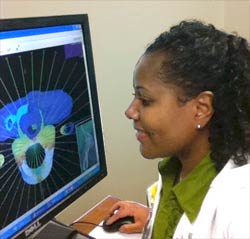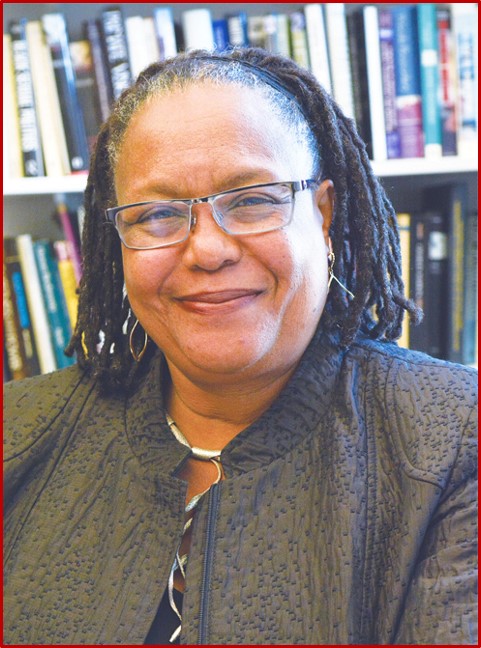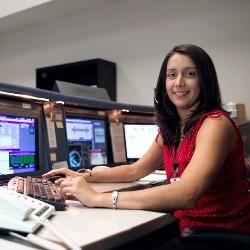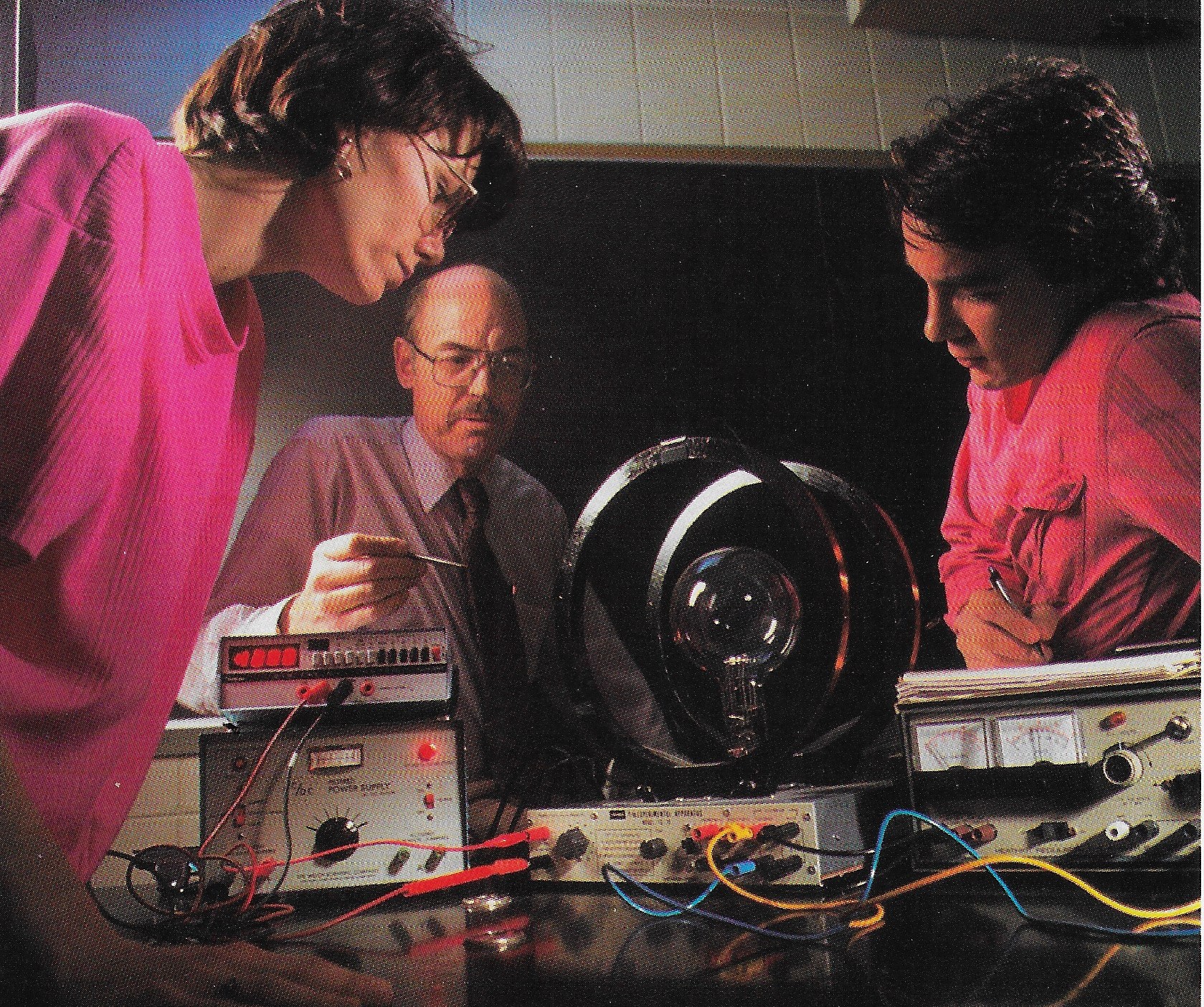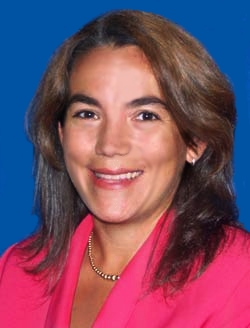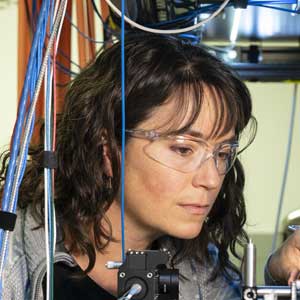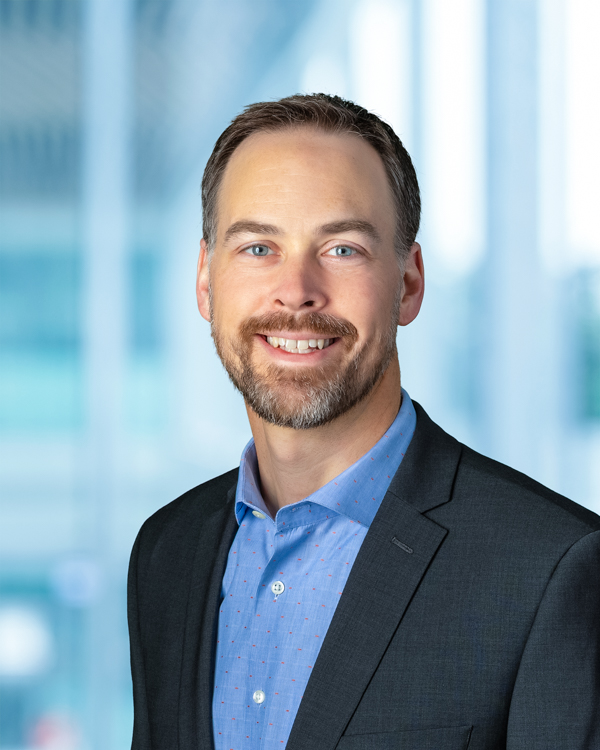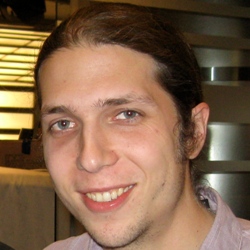Christina Barrow (Medical Physics MS)
Medical Physicist at the Department of Veterans Affairs
Christina had an early interest in math and science, and participated in her first science fair as a second grader.
"I was always tinkering around the house as a child, trying to figure out how and why things worked."
Christina started off as an electrical engineer, but wanted her work to impact medicine. So she decided to study Medical Physics in grad school. Christina now works at the Department of Verterans Affairs in Louisiana.
Her job is to treat cancer patients with radiation therapy. She ensures they receive the correct dosages of radiation - those which destroy tumors and do minimal damage to healthy tissue.
Evelynn Hammonds (Physics MS)
Professor and Department Chair at Harvard College
For Evelynn, there was no question that she was more interested in how physical things worked rather than studying questions about biology.
"From a very young age I was curious about how things worked in the world," she says.
In college, she spent her summers working in the Bell Laboratories Summer Research Program for Women and Minorities. She loved working in the lab, which motivated her to pursue graduate study in physics.
After earning her Master's from MIT, Evelynn worked as a software engineer, then pursued a PhD in the History of Science. Currently, Evelynn conducts research on the intersections of science, technology, race and gender, and has served as the first African-Amerian female dean of Harvard College.
Ginger Kerrick (Physics MS)
NASA Flight Director
When Ginger went to the library with her father, she found an astronomy book that had a section about space travel. At just 5 years old, Ginger knew she wanted to be an astronaut and nothing else.
After graduating from Texas Tech University, Ginger applied to be an astronaut at NASA, but didn't make it past the final cut. Instead, she became a Capsule Communicator, communicating directly with astronauts while they are in space.
Ginger is now the first Hispanic female NASA Flight Director, working on the plans and tasks that astronauts have to do in space.
Ginger has to be able to see a problem before it even comes up, and already have a plan ready to solve the problem. Her physics knowledge gives her the ability to think beyond the usual, and provide valuable insight on solving unexpected problems.
Paul Nyhuis (Physics MS)
Professor at Concordia College in St. Paul and Inver Hills Community College in Inver Grove Heights
Care Pastor at Last City Church in St. Paul
Paul's interest in atmospheric physics and astrophysics led him to the U, where he graduated with a Master's degree in physics. Throughout his studies, he noticed that he had a knack for helping people.
"As a grad student, I worked as a teaching assistant and lab instructor and greatly enjoyed helping students."
Building upon his strengths, Paul continued on to an instruction career, teaching physics and math at Concordia College, and later physics and astronomy at Inver Hills Community College. He earned several Instructor of the year awards.
More recently, Paul began doing pastoral care for a large church, including visitation in the community, and counseling. He later started working with the Dakota County Jail, offering visitation services and leading a recovery group. Paul says that his background in physics has helped him make connections with the men he mentors.
"My background in physics enhances my credibility, and I often use interesting topics in physics and astronomy to connect with incarcerated men...The men tell me that my friendship and mentoring is having a very positive impact in their lives, helping them find meaning and enabling them to make better choices."
Lynett Rock (Physics MS)
Science and Physics Education Department Chair at Connors State College
Lynett was interested in science and math, but a Minority Scholarship from APS encouraged her to major in physics. After her first physics class in college, she knew she had made the right choice.
"Everybody has something that they get to be very good at, and physics just happens to be my area."
After she earned her master's degree in physics, Lynett taught high school physics. She soon accepted a position teaching at the Connors State College, in her home town. Lynett now chairs the Science Department, but she still teaches physics and math classes.
"I believe teaching the next generation has a huge impact on the future," she says.
Julia Scherschligt (Physics MS)
Physicist at the National Institute of Standards and Technology
In high school, Julia liked the objective nature of physics, and went on to study physics and math in college. After graduating, she was unsure of career options for bachelor's degree recipients, so she decided to go to graduate school.
Julia found that graduate school did not fit her needs, and she chose not to continue after earning her Master's degree. She still loved physics, though, and found a position at the National Institute of Standards and Technology (NIST), supporting users of the neutron facility.
"I was super happy to be back in physics...It was sort of like a customer service role but with a lot of technical content."
Julia has worked in several groups at NIST, and currently works in the thermodynamic metrology group. She has risen to lead the team, which focuses on temperature, pressure and humidity.
"I call us the 'Custodians of the Kelvin in America'," Julia says. "[Any] sort of temperature measurement device is tied back to measurements that are done either at NIST or at the equivalent of NIST in [another country]."
Paul Way (Physics MS)
General Manager, Engine Liquid Filtration at Donaldson, Minneapolis MN
Paul's first encounter with physics was an AP class during his senior year of high school. During his college orientation at St. Olaf, he attended the physics department's introduction and made connections with faculty. After receiving an offer to become a physics TA in his first semester, he quickly decided to become a physics major, later adding a second major in philosophy.
Paul chose the U's graduate school over industry at first, feeling that it was the better choice for a more science focused career. He decided to change course after achieving his master's degree, feeling that a PhD was great for academia, but not needed for his intended corporate career.
"[My advisor] had a great group of students, and I was able to learn some hard skills around electronics, instrument design, analysis, and computer programing. I think it's a common physics skills set that I've found plays well in industry."
Paul worked as a physicist for the Environmental Protection Agengy, and more recently at Donaldson, Inc., a global filtration solutions company based in Minneapolis.
"My background in physics has positioned me with a strong science and engineering skill set as well as a problem-solving attitude that works well in any business function."
Sam Wurzel (Physics MS)
CEO and Co-Founder of Octopart, Inc.
Sam's "entrepreneurial spirit" arose out of frustration as a physics graduate student: searching for parts in huge paper catalogs!
Recognizing a need in the science community for a better way to find parts, and inspired by an essay on startups, Sam teamed up with a friend to create an online search engine: Octopart.
Today, Octopart's 700,000 users can search for 30 million parts from thousands of suppliers! Sam owes his success in part to his physics training.
